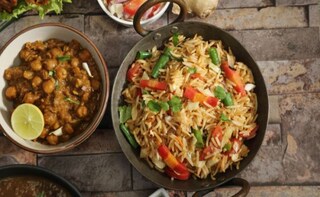Alexander’s invasion of India in the 3rd century BC was not merely conquest. It paved the way for lasting ties with the West through trade but also through cultural intermixing and the finding of new expressions in art, culture and cuisine. One of Selecus’s daughters married Chandragupta Maurya, creating a mixed genepool as well.
Advertisement
Advertisement
Advertisement
Advertisement
For the latest food news, health tips and recipes, like us on Facebook or follow us on Twitter and YouTube.
Advertisement
